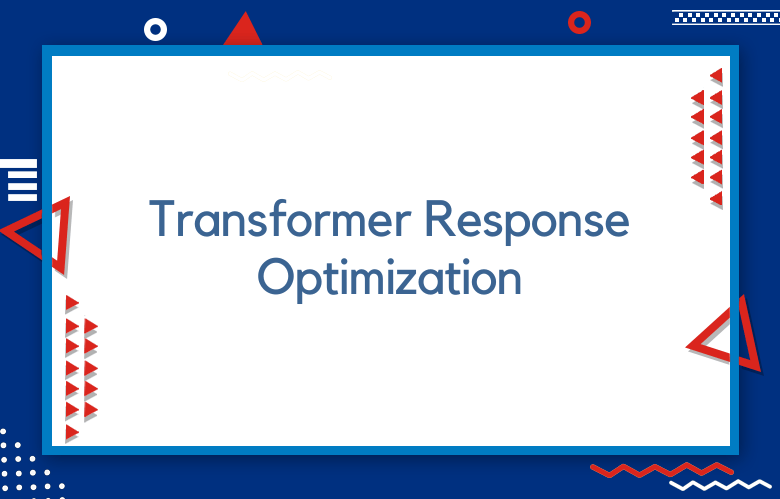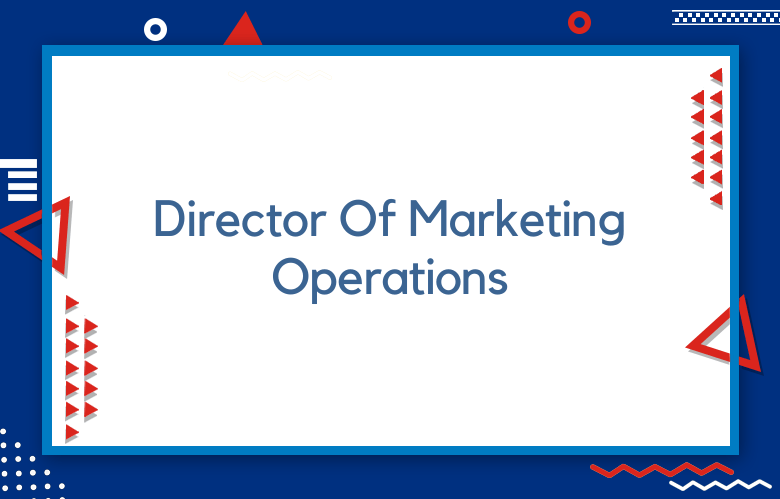What is Transformer Response Optimization (TRO)?

Transformers are vital components in power systems as they help step up and down voltage levels for efficient power transmission. They are designed to handle considerable stress but can degrade or fail over time. This is where Transformer Response Optimization (TRO) comes in. TRO is a technique used in power transformer maintenance to enhance the transformer’s reliability, extend its lifespan, and improve its performance. We will dive deeper into the subject of TRO, its benefits, and how it works.
Power transformers are some of the most crucial components in the electrical grid. They play a critical role in the energy transfer process, ensuring that power is transported safely and efficiently from one point to another. However, transformers can malfunction over time, causing unplanned outages and damage to the grid.
To prevent such occurrences, transformer response optimization (TRO) has become widespread in the power industry. Explores transformer response optimization (TRO) and its benefits.
Introduction to Transformer Response Optimization (TRO)?
Transformer Response Optimization, or TRO, is a cutting-edge technique in power system engineering designed to optimize transformers’ responses in power networks.
This critical process ensures the durability and reliability of transformers and, ultimately, the overall stability of the power grid.
Optimizing transformer response requires a deep understanding of power system dynamics, transformer design, and various control strategies.
TRO allows engineers to improve the response of transformers to dynamic loads or disturbances, such as voltage fluctuations, short circuits, or sudden changes in power demand.
One of the critical benefits of TRO is that it enables engineers to anticipate and mitigate potential problems before they occur, leading to more efficient and effective power grid operations.
With TRO, engineers can optimize transformer design, placement, and control strategies, reducing energy losses, improving power quality, and enhancing reliability.
The Role of TRO in Improving Natural Language Processing?
Natural Language Processing (NLP) is a field of study focusing on interactions between human language and computers.
Over the past few years, NLP has become essential to many applications, ranging from chatbots and virtual assistants to predictive text and speech recognition.
However, one of the significant challenges of NLP is dealing with ambiguity and nuance in language, which can affect the accuracy and efficiency of language processing tasks. This is where TRO (Task-Related Objectives) comes in.
TRO is a framework that aims to improve NLP by incorporating task-related objectives into the language model.
The idea is to give the model a clear understanding of what it needs to do with the input language and how it can use the available resources to achieve the desired outcome. For example, if the task is to classify emails as spam or non-spam, the
TRO for the model would be to maximize the accuracy of the classification. By focusing on this goal, the model can learn to identify the essential features of the language that are relevant to the task and neglect the irrelevant ones.
Benefits of using TRO in Chatbot Development?
Time-saving
TRO can help you save a lot of time in chatbot development by allowing you to reuse components and modules you have already developed. You will not have to start from scratch when creating a new chatbot.
Cost-effective
TRO can also help you save money in chatbot development as it can help you reuse existing code and components. This means you will not have to spend money on developing new chatbots from scratch every time.
Increased Efficiency
TRO can also increase the efficiency of your chatbot development process as it allows you to reuse existing code and components. This means that you will be able to create new chatbots more quickly and efficiently.
Improved Quality
TRO can also help improve the quality of your chatbot development by allowing you to reuse existing code and components. This means that your chatbots will be more reliable and efficient.
Reduced Development Time
TRO can also help reduce the time required for chatbot development by allowing you to reuse existing code and components. This means that you will be able to create new chatbots more quickly and efficiently.
Increased Flexibility
TRO can also increase the flexibility of your chatbot development as it allows you to reuse existing code and components. This means you can create new chatbots that are more customized and tailored to your specific needs.
Improved User Experience
TRO can also help to improve the user experience of your chatbots as it allows you to reuse existing code and components. This means that your chatbots will be more user-friendly and easier to use.
Understanding the Working Principle of TRO?
The Thermally Regenerated Adsorption (TRO) method is an air pollution control technology that utilizes adsorption processes to remove volatile organic compounds (VOCs) and other hazardous air pollutants from industrial exhaust streams.
The TRO method primarily works by alternately exposing a bed of adsorbent material to an on-stream gas stream containing VOCs and another stream of hot gas that regenerates the bed by desorbing the adsorbed species.
The TRO method effectively controls VOC and air pollution due to its high removal efficiency and low operating costs. It can be used in various industrial settings, such as chemical production plants, petroleum refineries, and printing facilities.
Comparison of TRO with Other Response Optimization Techniques?
TRO (Threshold Reordering Optimization) is a powerful technique to optimize the response of computer systems such as databases, message queues, and web servers.
TRO aims to minimize the response times of these systems by reordering the requests so that the system can process them more efficiently. However, other response optimization techniques are also utilized in computer systems.
One such technique is load balancing. Load balancing involves distributing incoming requests across multiple servers to ensure that each server is utilized evenly.
This prevents any server from overloading, leading to slow response times and system downtime. Load balancing can be implemented in hardware or software and optimized using algorithms such as Round Robin or Weighted Round Robin.
While load balancing optimizes response times, it requires more hardware resources than TRO.
Implementing TRO in Your Chatbot: Best Practices and Considerations?
As businesses increasingly adopt chatbots to provide customer service, it has become increasingly important to ensure that these bots are designed to meet the needs and preferences of users.
A key component of chatbot design that has gained traction in recent years is task-oriented dialogue (TRO). TRO refers to the design principle of structuring a chatbot’s interactions with users around specific tasks or goals.
Businesses should take into account several best practices and considerations when implementing TRO in their chatbots.
Firstly, it is essential to identify the tasks users are likely to engage with the chatbot and structure the dialogue flow around those tasks.
This may involve breaking down larger tasks into smaller, more manageable steps and providing clear prompts and instructions to guide users through each step of the process.
What is the future of TRO and Its potential impact on Conversational AI?
As the technology landscape continues to evolve rapidly, the future of TRO (Text-to-Rule Optimization) is a topic of great interest and importance for conversational AI.
TRO is a valuable tool for improving the accuracy and efficiency of natural language processing (NLP), which is at the core of conversational AI.
With the help of TRO, NLP algorithms can be fine-tuned to understand better and interpret the nuances of human language, leading to more accurate and meaningful responses.
The potential impact of TRO on conversational AI is significant. Conversational AI is already transforming many industries, from customer service and support to healthcare and finance.
With improvements in TRO, casual AI systems can become even more sophisticated and effective, leading to further applications and use cases.
For instance, conversational AI systems can more accurately diagnose medical issues, provide personalized financial advice, or even assist in legal or government contexts.
Is it overcoming common challenges in TRO Implementation?
When it comes to implementing Temporary Restraining Order (TRO), there are several challenges that law enforcement agencies and judicial systems must overcome.
One of the most significant challenges is ensuring that the TRO is appropriately served to the individual or individuals against whom it was issued. Failure to adequately perform the TRO can make it difficult to enforce, rendering it ineffective in protecting the victim.
Another challenge in TRO implementation is ensuring that the victim knows their rights and the resources available for seeking additional protection. Victims unfamiliar with the legal system may struggle to obtain a TRO or may not know how to report order violations.
Case Studies: Successful Examples of TRO in Action?
Implementing temporary restraining orders (TRO) is crucial to current legal proceedings. The efficient use of TROs is every day in various industries, including technology, environment, health, and entertainment.
The successful application of TROs has demonstrated its effectiveness in ensuring that parties comply with court orders while preserving their rights.
One successful example of TRO in action can be seen in the case of Apple vs. Samsung. In 2012, Apple was granted a TRO to prevent the sale of Samsung’s Galaxy Tab 10.1 due to copyright infringement.
The TRO effectively halted product sales in several countries and ensured that Samsung abided by the court order. The TRO allowed Apple to seek further legal action against Samsung, resulting in a settlement.
TRO vs. Human Responses: Can Machines Match Human Conversational Skills?
In recent years, there has been significant progress in developing chatbots and other conversational Artificial Intelligence (AI) technologies.
These technologies are designed to simulate human conversation and can be used for various applications, including customer service, personal assistants, and even mental health counseling.
However, while these machine-based conversational systems are beneficial in specific contexts, they have yet to match the full range of human conversational skills.
One key area where machines struggle is understanding the nuances of human language, which can vary widely depending on the speaker’s mood, tone, and cultural background.
Reasons to start thinking about TRO?
TRO, or Temporary Restraining Order, is a legal tool designed to protect victims of abuse or harassment. If you have experienced abuse, harassment, or threats from a family member, partner, or someone else, a TRO can offer immediate protection. Here are some reasons why you should start thinking about filing for a TRO:
Safety
If you are in an abusive or harassing situation, your safety is paramount. A TRO can help you stay safe by preventing the abuser from coming near you or contacting you. It can also give you time to plan and take other legal steps to protect yourself.
Legal backing
A TRO is not just a piece of paper but a legally binding court order. If the abuser violates the order, they can be arrested and face legal consequences. It is important to note that a TRO can only protect you for a limited period, but it can be extended or made permanent if necessary.
Emotional support
Going through abuse or harassment can be incredibly traumatic and emotionally taxing. By seeking a TRO, you are taking a proactive step towards protecting yourself and taking control of your situation. It can also provide much-needed emotional support as you navigate the legal process.
Setting boundaries
If someone is abusing or harassing you, they are violating your boundaries. Filing for a TRO is a powerful way to set clear boundaries and assert your right to safety and respect.
Encouraging others
Seeking a TRO can be a difficult decision, but it can also inspire others who may be in a similar situation. By standing up for yourself and seeking protection, you may set an example for others and encourage them to seek help and support.
In conclusion, if you are experiencing abuse or harassment, seeking a TRO can provide a vital layer of protection and support. It is a powerful tool that can help you assert your boundaries and take control of your situation. Don’t hesitate to reach out for help and explore your legal options.
Transformer Response Optimization (TRO) Consulting?
Transformer Response Optimization (TRO) Consulting is a vital service for companies dealing with transformers.
TRO Consulting specializes in optimizing the response of transformers to various inputs, thereby increasing their efficiency and effectiveness.
The company has built a team of expert engineers and technicians experienced in transformer technology and can provide tailored solutions to various transformer-related problems.
TRO Consulting understands that a transformer’s response is crucial to any power system’s success; therefore, they provide a range of solutions to help optimize transformer response.
The company’s approach involves analyzing and understanding the factors affecting transformer response, such as load conditions, environmental factors, and input voltage.
This analysis enables the TRO team to provide customized solutions that optimize transformer response for each client’s needs.
Conclusion
In conclusion, Transformer Response Optimization (TRO) is a vital technique in power transformer maintenance that helps to prolong a transformer’s lifespan, improve its efficiency and performance, and prevent catastrophic failures.
TRO technicians can accurately determine the transformer’s health status and remediate potential issues by analyzing the transformer’s equivalent circuit parameters, insulation system, and oil analysis.
Implementing TRO can help power utilities save considerable costs that would otherwise go toward transformer replacements and unplanned outages.
In conclusion, adopting TRO is essential in reducing the likelihood of transformer outages and damages. Electrical utilities can develop preventive and efficient maintenance plans by tracking the transformer’s response to fault conditions, ensuring the transformer’s optimal performance.
TRO has proven to result in minimized unplanned outages, reducing costs associated with downtime emergencies or system risks, and avoiding potential loss of energy distribution, which would significantly impact grid reliability.
Therefore, the benefits outweigh the challenges when deciding whether to implement and apply TRO in the electrical grid.
Call: +91 9848321284
Email: [email protected]



